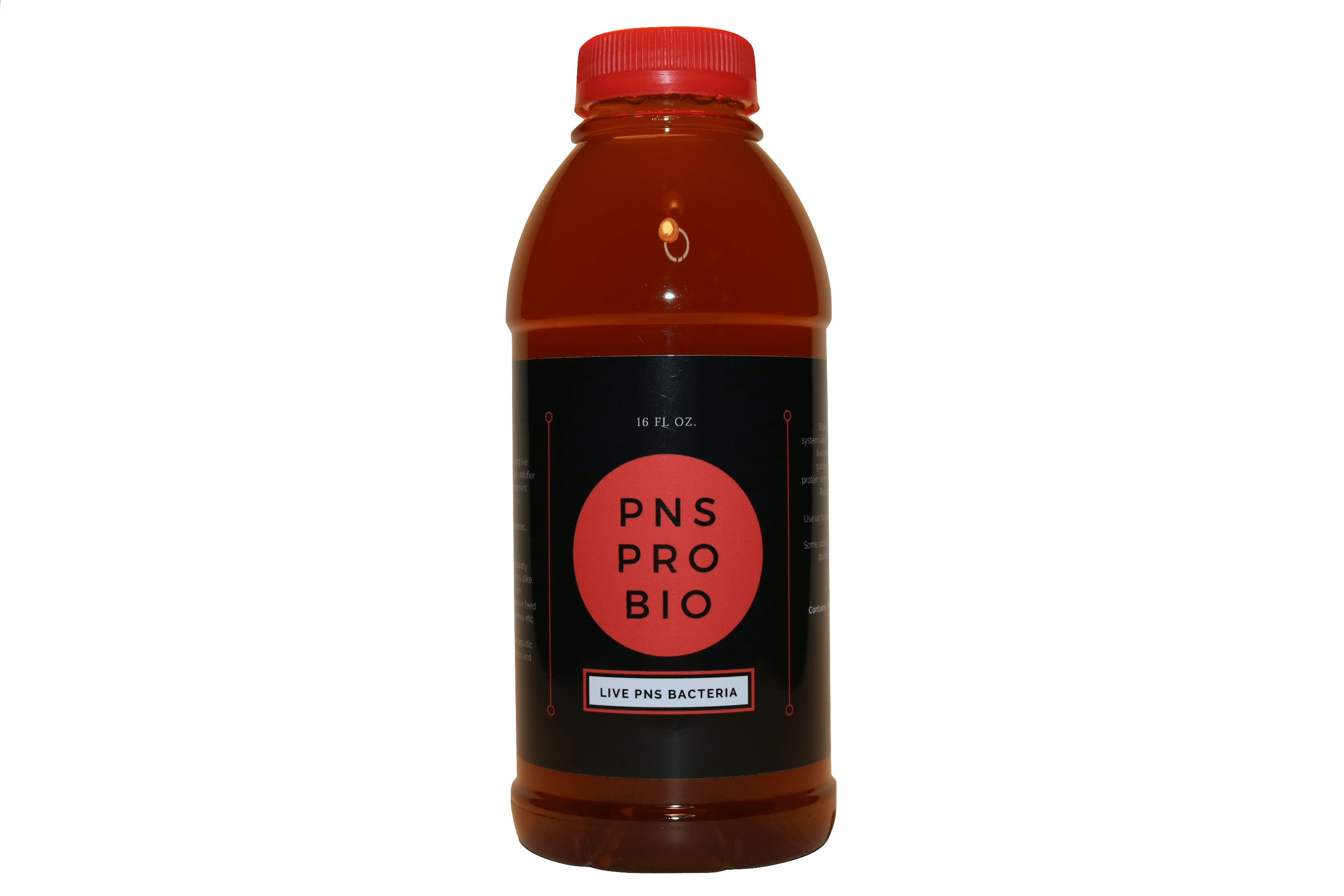PNS ProBio

 PNS ProBio - What is it?
PNS ProBio - What is it?
PNS ProBio™ contains R. palustris, a beneficial, naturally-occurring microbacteria, which is one of the oldest strain of Purple Nonsulfur Bacteria (PNB). It is found in freshwater, marine and brackish environments (in the water column, the sediments and even in the guts of animals such as corals and earth worms). This highly adaptive photosynthetic bacterium balances nutrient cycling in all types of agricultural systems. Though it performs a variety of ecological functions, it is most outstanding in its ability to balance nitrogen cycles (it performs nitrogen fixation, nitrification, denitrification and assimilation of inorganic nitrogenous compounds). It also balances carbon cycles, reducing BOD (it performs carbon fixation and can digest organic compounds (including cellulose and lignin). As it consumes biological waste products, it simultaneously serves as a wholesome food source for bacterivores ranging from amphipods to filter-feeding invertebrates.
Purple non-sulfur bacteria have for long been used successfully to remediate water quality in highly intensive aquaculture operations. Moreover, they are increasingly used to amend water assets in aquaponic applications. Their probiotic qualities are shown to suppress disease in numerous cultured plant and animal species. PNS ProBio™ helps to maintain an ecologically stable captive habitat, enriches live food items and forms direct, beneficial associations with the root systems and foliage of both terrestrial and aquatic plants.
Purple non-sulfur photosynthetic bacteria (PSB) may be a useful food for notoriously difficult creatures such as Dendronephthya and other filter feeders that specialize on eating microscopic plankton. Kolber et al. (2003) found that PSB occur from the surface down to approximately 150 meters (420ft.), with a maximum concentration at approximately 35 meters (98ft.) PSB are a non-taxonomic group of several different organisms that have a versatile lifestyle, being able to grow as photoheterotrophs, photoautotrophs, or chemotrophs, depending on the existing environmental conditions. PSB can switch from a metabolism based on the consumption of organic carbon to one based on its production by photosynthesis, depending on the concentration of organic matter in ocean water. In environments that are rich in dissolved organic matter, PSB stop making photosynthetic pigment and simply consume organic matter.
In the aquaculture industry, PSB are raised to help condition water and boost the health of shrimp and other aquaculture products. They can be cultured and maintained for extended periods in closed jars, so the use of them as a feed for marine invertebrates is feasible.

Product Information:
When used as an aquarium/aquaponic inoculant, add one 16 fl oz bottle for every 400 gal system water (1.25 ml product/gallon system water) in an area of high flow. For best results, cut ultraviolet/ozone sterilization for the first 24 hours of each application. May be re-dosed regularly as desired for continuous feeding or nutrient and dissolved organics management.
Highly palatable and nutritious, PNS ProBio™ is readily consumed by virtually all small live food organisms (ciliates, rotifers, copepods, brine shrimp, etc.). For gutloading/enrichment, add 5 ml/gallon to zooplankton cultures approximately one hour before feeding out.
Frequently Asked Questions


What is the recommended dosage for
PNS ProBio and how often should I use it?
The recommended dosing for PNS ProBio is approximately 1.25ml/gallon as often as needed to lower excess nutrients, typically after a water change.


What is the best way to store PNS ProBio?
PNS ProBio should be kept at room temperature. Do not Refrigerate.

Do I need to turn any of my filtration off when I use PNS ProBio?
For best results, cut ultraviolet/ozone sterilization for the first 24 hours of each application.
Related Articles
PNS Yello Sno
PNS YelloSno is a unique product that simulates marine snow. In the ocean, a variety of different organic materials wash together and then sink due to mucilage from microbes. All of the organic material, such as animal feces, coral mucus, or dead ...Nitrocycle
Aquarium organisms from protozoa to fishes release ammonia into the water as a metabolic waste product which is highly toxic to marinelife. Thankfully, the natural world (and most aquaria) contain only trace quantities of the substance due to the ...The Nitrogen Cycle
One of the most discussed topics in the saltwater aquarium hobby, especially with beginners, is the "nitrogen cycle". The nitrogen cycle is a naturally occurring phenomenon where nitrogen is turned into several different chemical make-ups as it finds ...MarinePure Filtration Media
MarinePure Ceramic Media One of the most important aspects of an aquarium is having lots of surface area for beneficial bacteria to grow on. There are several ways to achieve this, but the information here will center around MarinePure Filtration ...Do I Need to Use TurboStart if My System is Already Cycled?
Ammonia and nitrite--toxic metabolites that can accumulate in recirculating aquarium systems are probably responsible for more fish mortality than anything else including parasitic infestations. We tend to see concentrations of these compounds at ...